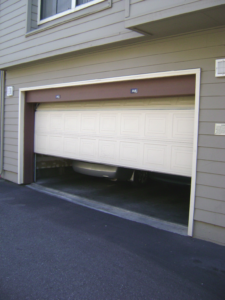AmRide Long Distance Transportation is a service that moves your car from one location to another, such as from city to city, state to state, or coast to coast.
Mode choice varies by trip purpose and distance. At shorter distances the personal vehicle is dominant; however, as trip length increases, public transportation becomes more popular.

Long distance transportation is a critical service for many, but it is not without safety concerns. This is because driving long distances for extended periods can be physically and mentally challenging for some. Luckily, there are ways to make the trip more comfortable and safer for everyone involved. The key is to plan the route correctly, as well as note the locations of all fuel stations and rest stops along the way. Taking the time to do this will reduce overall driving times and help ensure that you have enough gas in case of emergency.
When hiring a non-emergency medical transport company for a long distance travel, it is important to choose one with high standards and quality equipment. Their vehicles should be newer and crash compliant, fully loaded, sanitized, and inspected weekly to ensure safety, reliability, and comfort. Additionally, their drivers should be trained in patient and elder care sensitivity, HIPAA and CPR certified, and must pass a rigorous background check.
Road transport remains the most widespread mode of transportation in Europe and is a critical part of daily life. Despite this, accidents on long-distance bus services occur regularly and cause significant injuries to passengers. This paper aims to understand the factors influencing bus-related accidents by analyzing data from the ALSA long-distance service between Madrid and Bilbao in 2019 and 2021. This analysis identifies significant accident patterns, causes, and potential modifying factors.
The majority of the identified causes are related to human factor errors, including fatigue, work routines, night driving and stimulant use, and imposition of schedules. However, the results suggest that external factors also impact on-road behaviour. This study provides a unique insight into the complex interplay of these factors and suggests future avenues for improvement in safety management.
The human element of long-distance transportation is just as important as the vehicle fleet. In addition to comprehensive physical security and cybersecurity, transport companies should also implement passenger safety training to foster a safe traveling environment. Using advanced sensor technology, such as door and trailer seal breach sensors, allows for instant alerts in the event of cargo tampering during rest stops.
Reliability
Long distance medical transportation services provide a safe and reliable option for individuals who require assistance during travel. These non-emergency medical transport services operate on a schedule and arrive at destinations promptly, eliminating the risk of missing important consultations or treatments due to transportation delays. In addition, these services offer door-to-door service for convenience and ease of use.
Unlike public transportation and taxis, long distance medical transport services offer scheduled trips that ensure punctual arrival at destinations. This is especially crucial for individuals who have appointments that need to be kept. Additionally, long distance NEMT services provide peace of mind for family members who are worried about the safety and wellbeing of their loved ones during transit.
Medical transport companies are able to offer a high level of reliability because they have a fleet of newer crash compliant vehicles and drivers who are trained in basic life support. In addition, the vehicles are maintained, sanitized, and inspected weekly to ensure cleanliness, comfort, and safety.
When it comes to the reliability of road transport, weather conditions like rain or fog have a significant impact on journey times. However, this is something that can be managed by adjusting routes and schedules to account for changing circumstances. This is an advantage for businesses that rely on delivery services, as they can plan accordingly to avoid delays and ensure that packages reach their customers in good time.
For long distance deliveries, rail transport is a popular choice because it is efficient and offers flexibility. It can accommodate large loads and is especially suited to bulk cargo that needs to be transported across continents. It also has a lower carbon footprint than other modes of transport, making it an environmentally friendly solution for long-distance deliveries.
While the benefits of long distance non-emergency medical transportation are clear, there are some drawbacks to keep in mind. NEMT services are only available to patients who qualify as such. This includes patients who require Basic Life Support, and those with mobility issues, Alzheimer’s disease, cancer, or heart and lung conditions. Those who require a tracheostomy or ventilator may not be eligible for long-distance NEMT, so it is important to discuss your options with a health care professional.
Comfort
Whether traveling for work or leisure, long distance trips can be uncomfortable without proper accommodations. Long-distance medical transportation services prioritize passenger comfort by providing fully-equipped vehicles with amenities such as onboard refreshments, charging ports for electronic devices, and comfortable seating. They also offer door-to-door transit options, eliminating the hassle of navigating crowded airports or enduring lengthy drives.
When selecting a transportation service, make sure to communicate your specific needs and preferences to the team. This includes dietary restrictions, mobility requirements, and any other accommodations you may need to ensure a comfortable ride. Additionally, it is important to take regular breaks during the trip to stretch and relax your body. This will prevent stiffness and promote circulation throughout the journey.
It is also a good idea to pack comfort items, such as blankets or pillows, for the journey. These can provide relief from sore muscles or back pain and reduce discomfort from prolonged sitting. In addition, you should also wear comfortable, loose clothing that is easy to move in. Lastly, remember to take frequent hydration breaks. This will keep your body hydrated and help prevent dehydration, which can be a serious health risk for some people.
In addition to promoting passenger comfort, long-distance medical transportation services often offer onboard entertainment options and other amenities to keep passengers occupied during the trip. This can include audiobooks, music, and movies to help relieve boredom and stress during the trip. Some services even have in-car Wi-Fi, allowing passengers to stay connected and productive during the trip.
In addition, private long-distance transportation services can give your family the peace of mind that comes with knowing you and your loved ones will be taken care of during the entire journey. These services are staffed with trained medical personnel and can provide assistance with basic healthcare needs, including administering medication and monitoring vital signs. This can be particularly beneficial for families who have a loved one in need of non-emergency medical transport who is in need of treatment that is not available locally.
Flexibility
Many older adults have difficulty driving, especially over long distances. They may need help getting to appointments or medical procedures, or they simply cannot drive themselves anymore. When they can’t drive, it can be difficult to find transportation options that are safe and convenient. One option is a non-emergency medical transportation service, or NEMT. These companies specialize in transporting senior citizens and people with mobility issues. They have vehicles that are wheelchair accessible, and their drivers are trained in providing medical assistance on the road.
A good NEMT company is flexible in terms of their payment policy. Usually, they allow their clients to pay on a cash basis when they receive the car. They may also offer a credit card or bank account option. This allows the client to have peace of mind knowing that they’ll get their vehicle back no matter what happens during transportation.
In addition to flexibility in payments, the best NEMT companies are flexible when it comes to mileage fees and other add-on costs. They will let you know upfront if they have any hidden fees before booking a ride. Then, you can choose the option that works best for your situation.
Another important aspect of flexibility is the ability to accommodate changes in demand. In particular, flexible transportation systems can be responsive to weather disturbances or other events that disrupt supply chains. This capability can make a significant difference in the profitability of shipping businesses, and it can reduce their exposure to risks such as disruptions to port operations or capacity constraints.
In general, air and rail transportation are more flexible than road transport. However, they are subject to limited schedules and routes, making them less suitable for last mile delivery. Moreover, rail networks can be affected by weather disturbances, which makes it more challenging to plan shipments to remote locations.
For these reasons, it is essential to create a multimodal system that can provide greater flexibility than current transportation systems. This will help reduce the impact of disruptions, and will ensure a seamless flow of goods. Ultimately, this will improve customer satisfaction and increase the competitiveness of the industry.








